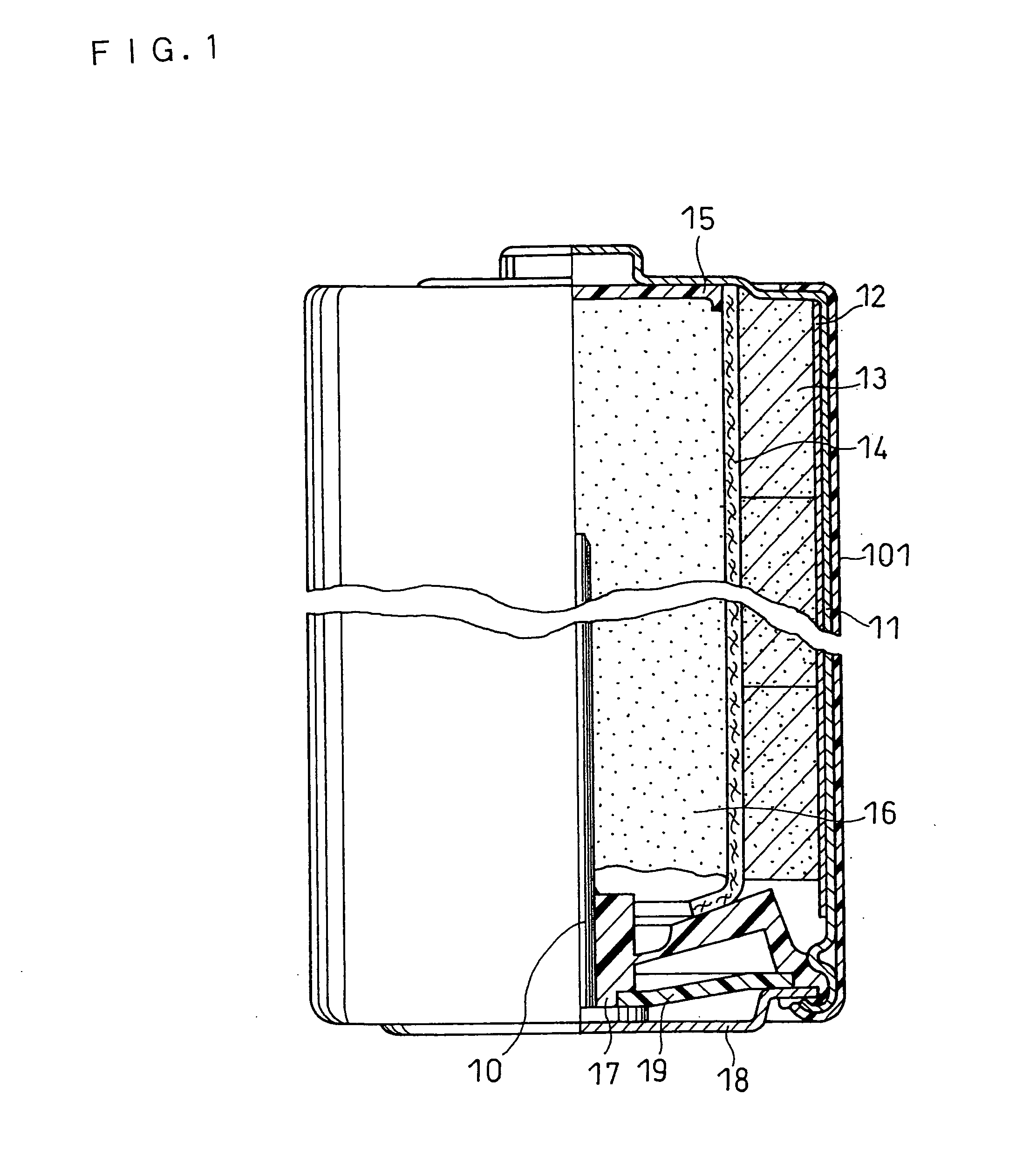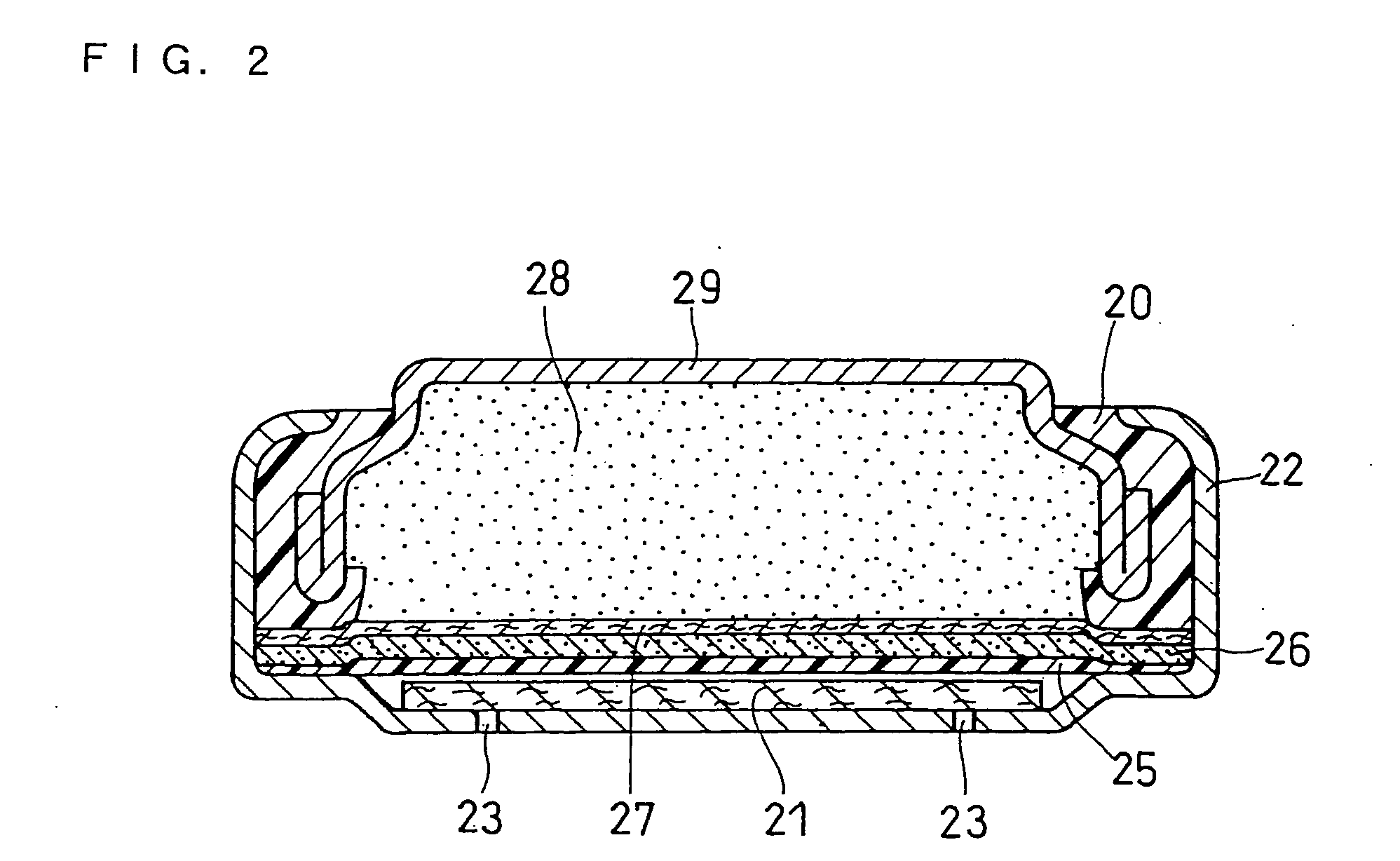Alkaline battery and method for producing the same
- Summary
- Abstract
- Description
- Claims
- Application Information
AI Technical Summary
Benefits of technology
Problems solved by technology
Method used
Image
Examples
example 1
[0072] An AA size alkaline dry battery as illustrated in FIG. 1 was produced.
(Preparation of Alkaline Electrolyte)
[0073] An alkaline aqueous solution containing 40% by weight of potassium hydroxide, 3% by weight of zinc oxide, and 0.05% by weight of cuprous sulfate (copper content 0.028% by weight), serving as a compound containing a metal element M, was used as the alkaline electrolyte. The alkaline aqueous solution was prepared as follows.
[0074] First, a potassium hydroxide aqueous solution with a potassium hydroxide concentration of 60% by weight was mixed with zinc oxide powder and cuprous sulfate powder. The resulting mixture was diluted to provide a potassium hydroxide concentration of 40% by weight. Upon the dilution, the alkaline aqueous solution produced heat, so that the temperature increased. The respective powders were thus readily dissolved by stirring.
(Preparation of Negative Electrode)
[0075] Zinc alloy powder was prepared by atomization. Specifically, 0.003% by...
example 2
[0081] An alkaline dry battery was produced in the same manner as in Example 1 except that the alkaline electrolyte contained cupric sulfate as the compound containing the metal element M and that the copper content was set to 0.020% by weight.
example 3
[0082] An alkaline dry battery was produced in the same manner as in Example 1 except that the alkaline electrolyte contained cuprous chloride as the compound containing the metal element M and that the copper content was set to 0.032% by weight.
PUM
| Property | Measurement | Unit |
|---|---|---|
| Percent by mass | aaaaa | aaaaa |
| Percent by mass | aaaaa | aaaaa |
| Percent by mass | aaaaa | aaaaa |
Abstract
Description
Claims
Application Information
 Login to View More
Login to View More - R&D
- Intellectual Property
- Life Sciences
- Materials
- Tech Scout
- Unparalleled Data Quality
- Higher Quality Content
- 60% Fewer Hallucinations
Browse by: Latest US Patents, China's latest patents, Technical Efficacy Thesaurus, Application Domain, Technology Topic, Popular Technical Reports.
© 2025 PatSnap. All rights reserved.Legal|Privacy policy|Modern Slavery Act Transparency Statement|Sitemap|About US| Contact US: help@patsnap.com



